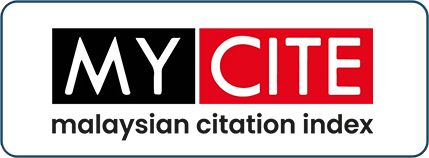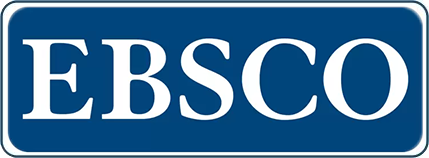The Evolution Of Halal Research: A Bibliometric For 1996 – 2020
DOI:
https://doi.org/10.33102/jfatwa.vol27no3.443Keywords:
halal, bibliometric, keyword analysis, emerging clusters, untapped areas, halal curriculum, halal scienceAbstract
The purpose of this review was to examine the evolution of halal research across various sectors in the last two decades, identify research gaps, and explore future research directions. This study employed the Scopus database to identify articles with the term “halal” within the publication year of 1996 to 2020. Bibliometric and network analyses were performed on 1770 articles using VOSviewer software 1.6.13. Citation metrics were generated using Publish and Perish v7 software. Halal research themes encompassed different disciplines. Halal authentication was found to be the largest cluster among a total of 10 clusters. Emerging research areas include halal cosmetics, halal food supply chains, and halal tourism. Islamic finance and banking were found to be relevant in the halal ecosystem. Untapped areas include modest fashion, halal media and recreation, halal curriculum, halal science, and interrelationship between halal practice and Islamic faith. Responding to the COVID-19 pandemic, technologies surrounding digitisation and the Internet of Things are foreseen to be re-emerging hot areas. This study covers comprehensive halal research topics, including banking and financial aspects. A summary of recent bibliometric studies on halal is included in the discussion. The study also accentuates the keyword analysis that has enabled the identification of mature, emerging, and untapped clusters of halal research. The evolution of halal research was mapped to the Islamic economic sectors of the Global Islamic Economy Report to provide cogent arguments on the halal research landscape.
Downloads
References
Abedinnia, H., Glock, C. H., & Schneider, M. D. (2017), Machine scheduling in production: A content analysis. Applied Mathematical Modelling, Vol.50, pp.279–299, doi: https://doi.org/10.1016/j.apm.2017.05.016.
Ahmi, A., & Mohamad, R. (2019), Bibliometric Analysis of Global Scientific Literature on Web Accessibility. International Journal of Recent Technology and Engineering, Vol.7, No.6, pp.250–258.
Alam, S.S., & Sayuti, N.M., (2011). Applying the Theory of Planned Behavior (TPB) in halal food purchasing. International Journal of Commerce and Management, Vol.21, No.1, pp. 8–20, available at: https://doi.org/10.1108/10569211111111676
Azmi, N. A. N., Noor, N. A. M., & Elgharbawy, A. A. M. (2021), A Bibliometric Analysis on Halal Cosmetics Over Twenty Years. Halalpshere, Vol.1, No.1, pp.53–71, doi: https://doi.org/10.31436/hs.v1i1.9.
Baran, T. (2020), A literature review and classification of the studies on “halal” in Islamic business journals (2010-2018). Journal of Islamic Marketing. Doi: https://doi.org/10.1108/JIMA-10-2019-0206
Dinar Standard. (2019), State of the Global Islamic Economy Report 2019/2020, Dubai: Dubai the Capital of Islamic Economy.
Dinar Standard. (2020), State of the Global Islamic Economy Report 2020/21, Dubai: Dubai the Capital of Islamic Economy.
Falagas, M. E., Pitsouni, E. I., Malietzis, G. A., & Pappas, G. (2008), Comparison of PubMed, Scopus, web of science, and Google scholar: strengths and weaknesses. The FASEB Journal, Vol.22, No.2, pp.338–342, doi: https://doi.org/10.1096/fj.07-9492lsf.
Goodson, J. (2020, February 6), Is RFID finally ready to take on the food industry? • Detego, Detego, available at: https://webcache.googleusercontent.com/search?q=cache:fXDeEvBMVMEJ:https://www.detego.com/retail_insights_en/retail- (Accessed 10 May 2021)
Haleem, A., Khan, M. I., Khan, S., & Jami, A. R. (2020), Research status in Halal: a review and bibliometric analysis. Modern Supply Chain Research and Applications, Vol.2, No.1, pp.23–41, doi: https://doi.org/10.1108/MSCRA-06-2019-0014.
HDC. (2018). Halal Industry Master Plan 2030, available at: http://www.hdcglobal.com/wp-content/uploads/2020/02/Halal-Industri-Master-Plan-2030.pdf
Horwitz,L. (2020, May 21), Supply Chain Data Visibility Paramount as Industry Lurches into Next Chapter – IoT World Today. IOT World Today. https://www.iotworldtoday.com/2020/05/21/supply-chain-data-visibility-paramount-as-industry-lurches-into-next-chapter/ (Acessed 10 May 2021)
Ismail, M., Ismail, M. N., Othman, R., & Ismail, M. S. (2020), Halal Topic Journal Content Analysis in Journal of Islamic Marketing, British Food Journal and Meat Science. Journal of Contemporary Islamic Studies, Vol.5, No.1, pp.19–31.
Ismail, M. N., Othman, R., & Ismail, M. S. (2019), Halal tourism research bibliometric analysis in Scopus, ProQuest and Ebscohost, paper presented at the International Halal Conference, 22nd -23rd April, Osaka, Japan, available at: http://ir.uitm.edu.my/id/eprint/29952 (Accessed 10 May 2021)
Ismail, R.M., Mustafar, M., Yaacob, N. A., & Mat Yamin, F. (2020), Trend Analysis on 13 Years of Halal Research; Investigation on Halal Food Research. International Journal of Supply Chain Management, Vol.9, No.3, pp.1092–1096.
Ismail, S., Nason, E., Marjanovic, S., & Grant, J. (2012), Bibliometrics as a tool for supporting prospective R&D decision-making in the health sciences: strengths, weaknesses and options for future development. Rand Health Quarterly, Vol.1, No,4(11).
Laurent, P., Laurent, F., Bertrand, P. & Luxembourg, P (2015), Traceability across the Value Chain: Advanced Tracking Systems Business Innovation Observatory, Luxembourg: European Union.
Mishra, D., Gunasekaran, A., Papadopoulos, T., & Childe, S. J. (2018), Big Data and supply chain management: a review and bibliometric analysis. Annals of Operations Research, Vol.270, No.1, pp.313–336, doi: https://doi.org/10.1007/s10479-016-2236-y.
Moher, D., Liberati, A., Tetzlaff, J., Altman, D. G., & PRISMA Group. (2010), Preferred reporting items for systematic reviews and meta-analyses: the PRISMA statement. International Journal of Surgery, Vol.8, No.5, pp.336–341, doi: https://doi.org/10.1016/j.ijsu.2010.02.007.
Moher, D., Liberati, A., Tetzlaff, J., Altman, D. G., & PISMA Group. (2009). Preferred reporting items for systematic reviews and meta-analyses: the PRISMA statement. PLoS Medicine, Vol.6, No.7(e1000097), pp.1-6, doi: https://doi.org/10.1136/bmj.b2535.
Mongeon, P., & Paul-Hus, A. (2016), The journal coverage of Web of Science and Scopus: a comparative analysis. Scientometrics, Vol.106, No.1, pp.213–228, doi: https://doi.org/10.1007/s11192-015-1765-5.
Mostafa, M. M. (2020), A knowledge domain visualization review of thirty years of halal food research: themes, trends and knowledge structure. Trends in Food Science & Technology, Vol.99, pp.660–677, doi: https://doi.org/10.1016/j.tifs.2020.03.022.
Mubarrok, U. S., Ulfi, I., Sukmana, R., & Sukoco, B. M. (2020). A bibliometric analysis of Islamic marketing studies in the “journal of Islamic marketing.” Journal of Islamic Marketing, ahead-of-print(ahead-of-print), available at: https://doi.org/10.1108/JIMA-05-2020-0158
Mukhtar, A., & Butt, M. M. (2012). Intention to choose Halal products: the role of religiosity. Journal of Islamic Marketing, Vol.3, No.2, pp.108–120., available at: https://doi.org/10.1108/17590831211232519
Omar, W. M.W., Ismail, M. N., Ismail, M., Ahmad, G. O., & Ya, M. S. (2020). Visualizing Research Literature in Halal Supply Chain: A Bibliometric Analysis, Malaysian Journal of Consumer and Family Economics, Vol. 24 (S2), pp. 75-92.
Omar, W. M.W., Rahman, S., & Jie, F. (2015), "Halal food chain management: a systematic review of literature and future research directions", Proceedings of the 13th ANZAM Operations, Supply Chain and Services Management Symposium (ANZAM 2015), , RMIT University, Melbourne, Australian and New Zealand Academy of Management (ANZAM). pp. 1-26.
Radwan, M., Kamal, M., Khavarinezhad, S., & Calandra, D. (2019), Influencing Factors on Modest Fashion Market: A Case Study. International Journal of Applied Research in Management and Economics, Vol.2. No.1, pp.12–22, available at: https://doi.org/10.33422/ijarme.v2i1.208.
Rejeb, A., Keogh, J. G., Rejeb, K., & Dean, K. (2021), Halal food supply chains: A literature review of sustainable measures and future research directions. Foods and Raw Materials, Vol.9, No.1, pp.106–116, available at: https://doi.org/10.21603/2308-4057-2021-1-106-116.
Rejeb, A., Rejeb, K., & Zailani, S. (2021), Are halal food supply chains sustainable: a review and bibliometric analysis. Journal of Foodservice Business Research, pp. 1–42, available at: https://doi.org/10.1080/15378020.2021.1883214
Rejeb, A., Rejeb, K., Zailani, S., Treiblmaier, H., & Hand, K. J. (2021). Integrating the Internet of Things in the halal food supply chain: A systematic literature review and research agenda. Internet of Things, Vol.13, No.100361, pp. 1-18, available at: https://doi.org/10.1016/j.iot.2021.100361
Said, S., & Hanapi, M. S. (2019), The Philosophy of Halal Science Concept in Al-Qur’an: A Study of Thematic Exegesis. International Journal of Academic Research in Business and Social Sciences, Vol .9, No.5, pp.154-166, available at: https://doi.org/10.6007/IJARBSS/v9-i5/5847
Secinaro, S., & Calandra, D. (2020). Halal food: structured literature review and research agenda. British Food Journal, Vol.123, No.1, pp. 225–243, available at: https://doi.org/10.1108/BFJ-03-2020-0234
Tieman, M. (2011). The application of Halal in supply chain management: In-depth interviews. Journal of Islamic Marketing, Vol.2, No.2, pp. 186-195, available at: https://doi.org/10.1108/17590831111139893
Vaughan, J. (2021, January 18), Supply Chain Analytics and IoT Loom Large in Wake of 2020 Disruption – IoT World Today. IOT World Today, available at: https://www.iotworldtoday.com/2021/01/18/supply-chain-analytics-and-iot-loom-large-in-wake-of-2020-disruption/ (Accessed 10 May 2021)
Vieira, E., & Gomes, J. (2009). A comparison of Scopus and Web of Science for a typical university. Scientometrics, Vol.81, No.2, pp.587–600, doi: https://doi.org/10.1007/s11192-009-2178-0.
Willocks, L. J., Morgan, D., Sufi, F., Ward, L. R., & Patrick, H. E. (1996), Salmonella virchow PT 26 infection in England and Wales: a case control study investigating an increase in cases during 1994. Epidemiology & Infection, Vol.117, No.1, pp.35–41, doi: http://www.journals.cambridge.org/action/displayJournal?jid=HYG.
Wilson, J.A.J., & Liu, J. (2010), Shaping the Halal into a brand? Journal of Islamic Marketing, Vol.1, No.2, pp.107–123, doi: https://doi.org/10.1108/17590831011055851.
Wilson, Jonathan A J, & Grant, J. (2013). Islamic marketing–a challenger to the classical marketing canon? Journal of Islamic Marketing, Vol.4, No.1, pp.7–21, doi: https://doi.org/10.1108/17590831311306327.
Zhong, S., Geng, Y., Liu, W., Gao, C., & Chen, W. (2016). A bibliometric review on natural resource accounting during 1995–2014. Journal of Cleaner Production, Vol.139, pp.122–132, doi: https://doi.org/10.1016/j.jclepro.2016.08.039.
Downloads
Published
Issue
Section
License
Copyright (c) 2022 Prof. Dr. , Anis Najiha Ahmad, Dr. , Miratul Hayah Abd Lateef, Nurul Syahirah Majlan

This work is licensed under a Creative Commons Attribution 4.0 International License.
The copyright of this article will be vested to author(s) and granted the journal right of first publication with the work simultaneously licensed under the Creative Commons Attribution 4.0 International (CC BY 4.0) license, unless otherwise stated.















